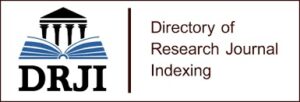Risk Factors Associated with Increased Cervical Cancer Acquisition in Women: A Comprehensive Analysis
Cervical cancer remains a significant health challenge in Kenya, with treatment outcomes varying widely due to a range of risk factors. This publication examines the factors influencing the effectiveness and accessibility of cervical cancer treatment in Kenya. By analyzing socio-economic, healthcare, and individual-level determinants, this study provides insights into the barriers and challenges faced by patients and healthcare systems, aiming to inform strategies to improve treatment outcomes and equity in cancer care. This study investigates factors influencing increased cervical cancer acquisition including HPV awareness among women, examining demographic characteristics, socioeconomic status, educational attainment, and attitudes towards HPV vaccination. Multivariable analysis revealed that higher educational levels, positive HPV vaccine attitudes, and awareness of the HPV vaccine were significantly associated with above-average knowledge of HPV (Kahn et al., 2008). Significant predictors included age, marital status, and educational attainment. These findings highlight the need for targeted educational interventions and improved access to HPV vaccination information to enhance awareness across diverse demographic groups (Smith et al., 2015).




















